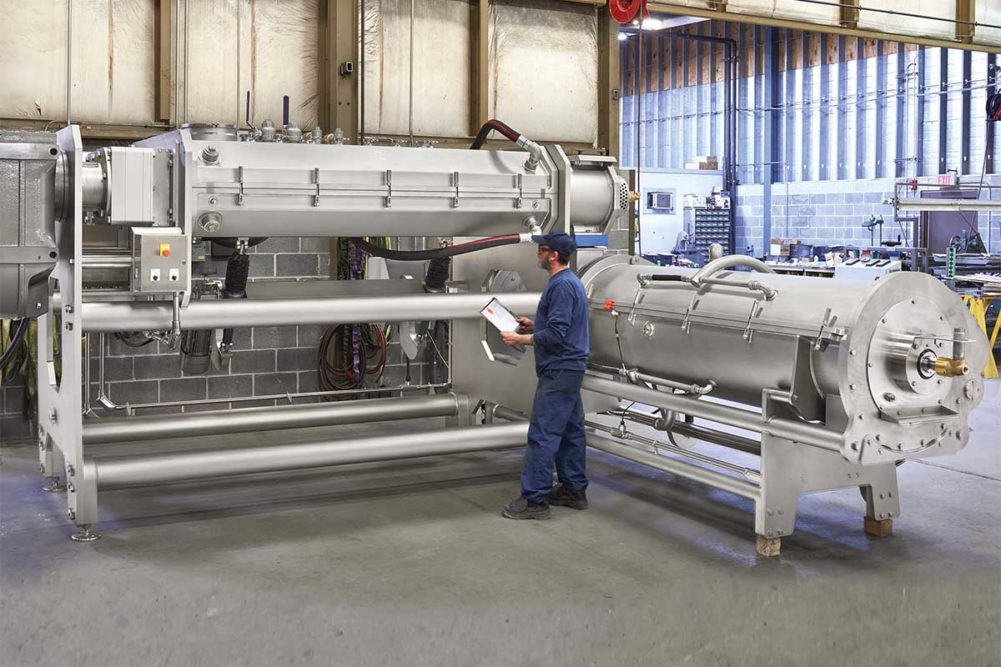LAS VEGAS — Baked good production depends on an efficient mixing process, but the labor needed for this step is in increasingly short supply.
“It’s more and more rare to have a fully staffed mixing room in your bakery than it was in the past,” explained Jim Warren, vice president, Exact Mixing, Reading Bakery Systems. “There has been a labor crisis since COVID started. … I have customers who tell me they set their day’s production depending on who shows up to the run the line that day.”
Today’s labor force prioritizes flexible hours, higher pay and the ability to work from home, all of which are difficult or impossible in bakery facilities, Mr. Warren said.
“The bottom line is what today’s workforce wants are things that are sometimes difficult for the bakery to supply.”
Amid these labor challenges, more manufacturers are aiming for a “lights out” bakery, automating to the point they could produce with the lights off as all labor positions have been automated, Mr. Warren said.
At Pack Expo 2023, held Sept. 11-13 in Las Vegas, Mr. Warren detailed how bakers can achieve a labor saving, “lights out” mixing process through continuous mixing.
Mr. Warren shared the example of a large baking company that was looking to increase production of its best-selling cookie, currently producing 3,000 pounds of dough per hour via batch mixing.
By switching to a continuous mixing process, the company doubled throughput to 6,000 pounds per hour. The number of mixers per line also decreased from two to one, and the company eliminated the need for its three dedicated mixing employees, saving 130 labor minutes per hour.
Compared to a batch process, continuous mixing removes labor needs during material delivery, ingredient dosing, dough mixing and discharge. Mr. Warren noted that in addition to labor savings, continuous mixing reduces the chance of production error.
“You’re absolutely inviting the opportunity to make errors in the recipe formulation by the people who are weighing ingredients into the mixer,” he explained. “It’s a complicated process; they probably haven’t been doing this for months and months. They’re likely newly employed.”
Continuous mixers will require a larger initial investment than batch mixers, Mr. Warren said. For a batch mixing system that costs $500,000 a continuous mixer may cost $1 million. However, the savings in the long run will soon pay off this investment.
For example, by removing the need for three mixing positions that run three shifts a day, six days a week and 52 weeks a year at $20 an hour, a bakery could save $325,000 per year, meaning the return on investment only takes about a year and a half.
“And that’s only if you consider labor,” Mr. Warren pointed out. “If you consider the errors employees sometimes make resulting in waste, or if you consider the fact that employee is going to cost you more a year from now than today [savings are greater]. But the most important thing to consider is you can’t always find that person.”
Continuous mixing is most effective for bakers who run a few products for long periods with minimal changeovers, Mr. Warren noted. Additionally, bakers should have a high enough throughput that warrants the need for an investment in continuous mixing.
“If you’re at a very low [throughput] rate, 2,000 pounds per hour or lower, it’s going to be very difficult to justify the fully automated system because it’s going to be far more expensive than a batch system,” he explained.
For bakers with a high throughput and limited labor supply, however, continuous mixing can be an effective way to achieve a “lights out” mixing process that boosts production and provides critical labor savings.





